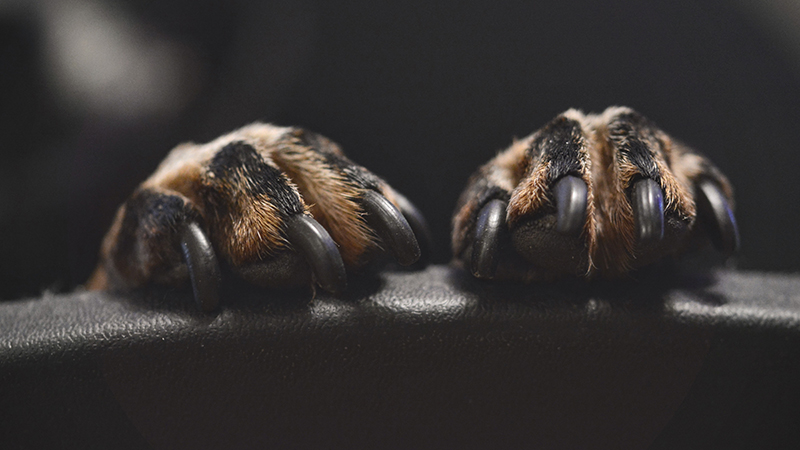How to cut dog nails without clippers
If your canine companion's nails are getting long, but you don't have any clippers to hand, what should you do?

Whether you don't have any to hand or are looking for a dog clipper alternative, you may be wondering how to cut dog nails without clippers that's both stress-free for you and your pet.
Many proud pet parents spend a good deal of their time either at the groomers or at the vet asking them to cut their dog’s nails, so it's only natural that you might begin to wonder whether cutting your dog's nails is something that you can do yourself at home.
Although this may seem like a simple task, a dog's nails can actually bleed a lot if they are cut too short. If you're feeling brave enough to have a go yourself, make sure you get your vet or groomer to show you what to do or watch some videos online. However, if the prospect of using clippers fills you with dread, or you don't have high quality dog nail clippers nearby, there are some alternative methods you can use to cut your dog's nails.
How can I cut my dog's nails at home?
If you’ve had a bad experience with clippers before, or your furry friend has a sixth sense when it comes to clippers, you might want to try an alternative.
The main options if you don't want to use clippers are nail files and grinders. While nail files are the quietest option, they're also very time-consuming. So, they might not suit an excitable or fidgety dog.
Many pet owners wonder whether dog nail clippers or grinders are better for their pooch, and there's many pros and cons of each. The key benefit of grinders are that they are quicker than filing and leave a smoother nail than clippers. However, grinders are louder than clippers, and dogs may not like the vibrating sensation.

Can I cut my dog's nails with human nail clippers?
You can use human nail clippers on young puppies' nails if you feel confident. However, it's not long before the nails become too strong and thick to be cut by human clippers. Don't be tempted to have a go with human nail clippers if you have an older puppy or adult dog. Human clippers can cause damage to the nails by crushing them and even causing them to crack or shatter.
Can I use a human nail file on my dog?
Using a human nail file on your dog can often seem like the best option. They don't make any noise, there's no risk of cutting the quick, and they're very gentle. Sounds good, right? But the downside is that it's so time-consuming. Unless you do it really regularly, it's almost impossible to file all of the nails, or even just the nails on one foot, in one sitting. Doing a little bit each time, in regular sittings, will help you keep your dog’s nails in perfect shape.
How do I file dog nails with a Dremel grinder?
If you're going to use a grinder to give your pooch a pedicure, it's essential to prepare properly. If you've never used a grinder on your dog before, start slowly by just turning it on nearby to get them used to the sound. You can gradually build up to using the grinder on one nail for a longer and longer period of time until they are comfortable with the sensation. Before starting your dog's pedicure, carefully trim any long fur away from the nails so that it doesn't get caught on the grinder. To file the nails, gently apply pressure with the grinder, paining close attention not to allow them to get too short.

So, is it better to file or grind my dog nails instead of clipping them?
As long as you are well prepared, using a nail file, grinder, or dog nail-clippers, are all good options. The method you choose should depend on your confidence level and your dog's temperament. Whichever you decide to use, make sure you have enough time before you start so that you don't have to rush.
It's also sensible to have a clean tea towel or other fabric to hand so that you can apply pressure to the nail if you accidentally cause it to bleed. The recipe for success when it comes to keeping your dog's nails healthy is to ensure both you and the dog are as relaxed as possible. So, take it slow, and your dog will be showing off perfect paws in no time!
Read next: Why do dogs bite their nails?
PetsRadar Newsletter
Get the best advice, tips and top tech for your beloved Pets
Dr Hannah Godfrey is a small animal vet who graduated from the Royal Veterinary College in 2011 and began work straight away at a busy mixed practice. Initially, she treated all species, but focussed on small animals from 2014. She has a passion for soft tissue surgery, ultrasound, and canine and feline dentistry, having completed additional training in these areas.

